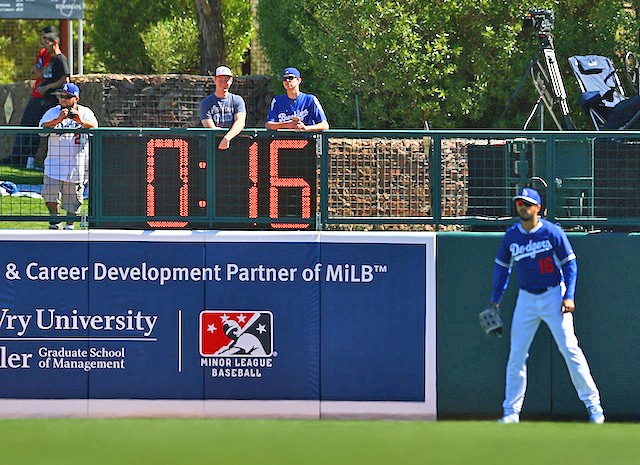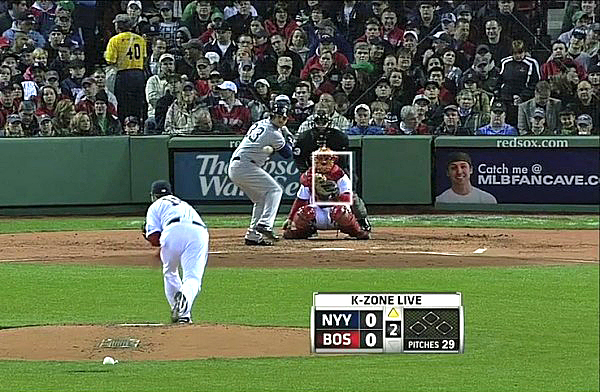This has been a COLD winter, both literally (with snow in Hawaii, Las Vegas, and even Malibu) and figuratively (with relations between Major League Baseball and the Major League Baseball Players Association). But with spring just around the corner and Opening Day now less than 30 days away, there are indications that the “icy” relationship between MLB and the player’s union is beginning to thaw.
Last week, unpopular former Dodger (albeit only briefly) Manny Machado signed one of the largest contracts in MLB history (10 years / $300 million) and on Tuesday, extremely popular Colorado Rockies third baseman and future Hall of Famer Nolan Arenado signed an 8-year / $260 million contract extension with the Rockies for what amounts to being the largest Average Annual Value (AAV) in MLB history (albeit probably only briefly), with rumors of perennial All-Star outfielder Bryce Harper being very close to signing what will be a record-breaking contract.
However, with Opening Day less than a month away, there are still an uncomfortably large number of unsigned free agents out there, signaling growing tension between MLB, MLBPA and team owners.
As most baseball fans recall, late last month MLB commissioner Rob Manfred submitted several significant proposed rule changes aimed at improving pace of play. An even though Manfred is well within his rights to do so, doing so with two years still remaining in the current Collective Bargaining Agreement (CBA) is somewhat unprecedented.
Chief among Manfred’s proposed rule changes was the implementation of a 20-second pitch clock, which are actually (sort of) already being tested during current spring training games. (Note: The pitch clocks have been installed and are currently being used, but no penalties are being assessed by umpires). And while the overall feeling appears to be mixed regarding the use of pitch clocks, they are not the panacea that Manfred had hoped for, not even remotely so.

(Photo credit – Mark J. Rebilas)
Shortly after Manfred notified the MLBPA of his proposed rule changes, union president Tony Clark made it known – in no uncertain terms – that there are bigger issues needing resolution than implementing a pitch clock; far bigger issues, especially with this unsigned-free-agents thing. However, things of that nature would have to be agreed upon between the two groups in a new CBA, which won’t occur until after the 2021 season.
Lo and behold, early Wednesday morning ESPN’s Jeff Passan reported (via Twitter) that MLB (i.e., Rob Manfred) has made a conciliatory counter proposal to the Players Association regarding pace-of-play rules. And while rule changes are not the stuff baseball fans long to discuss, the MLB’s proposal is an important step toward resolving differences at the bargaining table and tone down nonproductive rhetoric.
According to Passan, Manfred’s new MLB proposal includes:
- Table implementation of a pitch timer until a renewal collective bargaining agreement is negotiated in 2021.
- Address union’s proposal of an annual trade deadline, proposing the current July 31 date, but eliminating August waiver transactions.
- The more controversial three-batter minimum for pitchers in 2020 and further restrictions on mound visits.
- Agreeing in principal with the union’s proposal to increase roster size in 2020.
- Increasing number of required days on Injured List and minor league options.
- Trying to avoid roster manipulation by switching the injured list for pitchers from 10 to 15 days and doing the same for days they must spend in the minor leagues when optioned.
- Starting a runner on second base in the 10th inning of the All-Star Game and spring training games, and ending the latter in a tie after 10 innings.
And here’s a biggie which, in all honesty, we all knew would someday come, especially with guys named Angel Hernandez and Laz Diaz (among others) frequently blowing ball and strike calls behind the plate. Passan writes:
“MLB, in a partnership with the Atlantic League, plans on using the independent league this year to begin testing an automated strike zone and mound distance farther than 60 feet, 6 inches, according to a Baseball America report.”

(Image courtesy of ESPN)
There are other assorted proposals, but the significance of Manfred’s counter proposal shows a good faith willingness to negotiate over each side’s issues and gives fans reason to be hopefully optimistic.
Play Ball!
* * * * *




 February 27th, 2019 at 10:30 am
February 27th, 2019 at 10:30 am  by 0799291000348
by 0799291000348  Posted in
Posted in 

I can live with all the proposed rule changes even if the “put-a-runmner-@-2nd-base” thing is totally crap.
But moving the pitched bar distance to further than 60′-6″? That would TOTALLY throw the records book out the window. ALL baseball records would be meaningless if they do that.
I agree, you could lower the mound without affecting the integrity of the game, but leave the distance alone!
I agree totally.
“put-a-runmner-@-2nd-base” puts MLB on level with little league.
But if they do it I have a suggestion nobody seems to be considering. Suppose the first batter up is the teams best hitter, but he’s slower than a lawyer reaching for the dinner check. Not good.
Instead allow any player not currently in the game be the designated runner and leave the batting order alone. That would require an exception to the no return rule but, heck, they’re screwing up everything anyway. Why not?
If the idea is to shorten the games than set each team up to succeed.
Uh, any lawyers here? Just a joke.
When a relief pitcher comes into a game he should be ready to pitch.So why does he get 8 “warmup” pitches. Give him 3 pitches to get used to the mound and let’s “play ball!” That would keep the integrity of the game and speed it up a bit.
Might work for the home team, but the visiting pitchers aren’t used to the mound. This would give an unnecessary advantage to the home team.
Someone explain to me how increasing the distance a pitcher has to throw will *shorten* the game? With a farther distance, it’ll be harder to throw the ball in the strike zone, resulting in more balls, more walks, and longer innings.